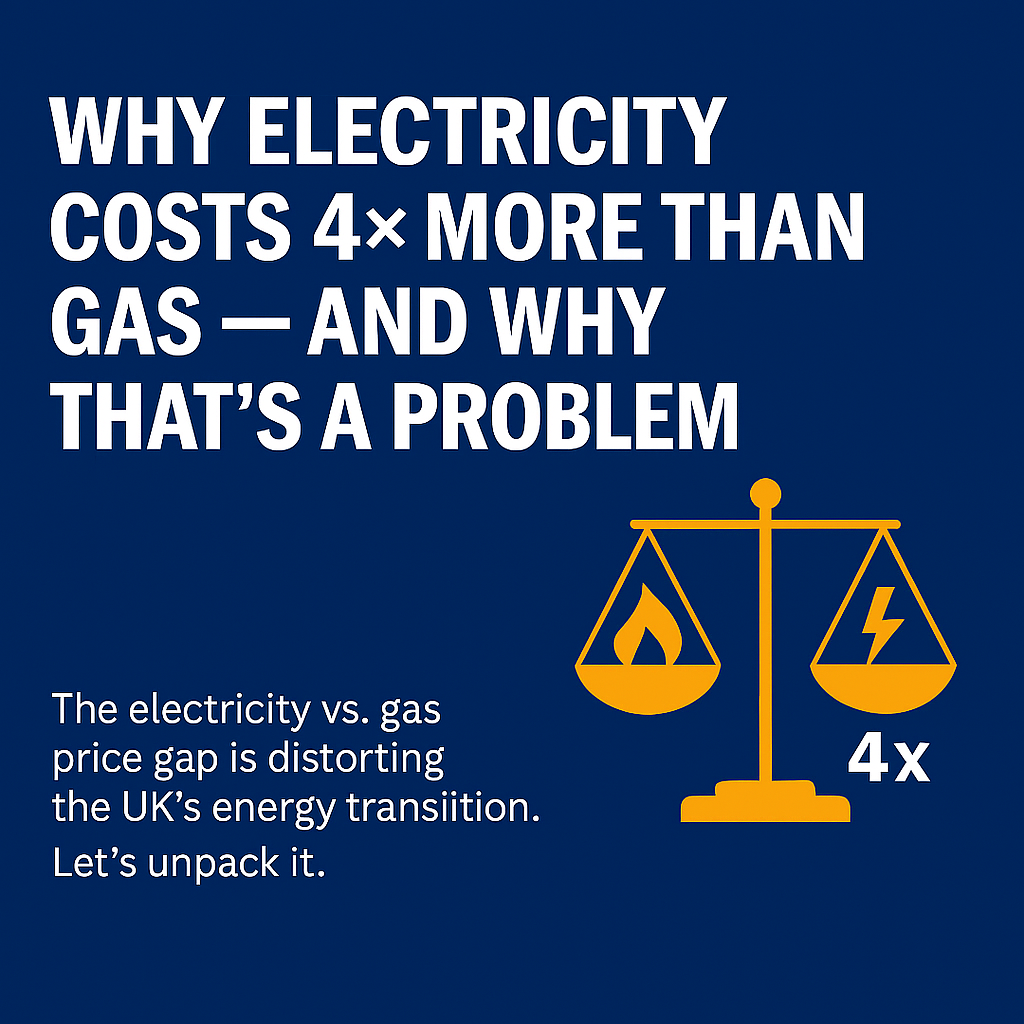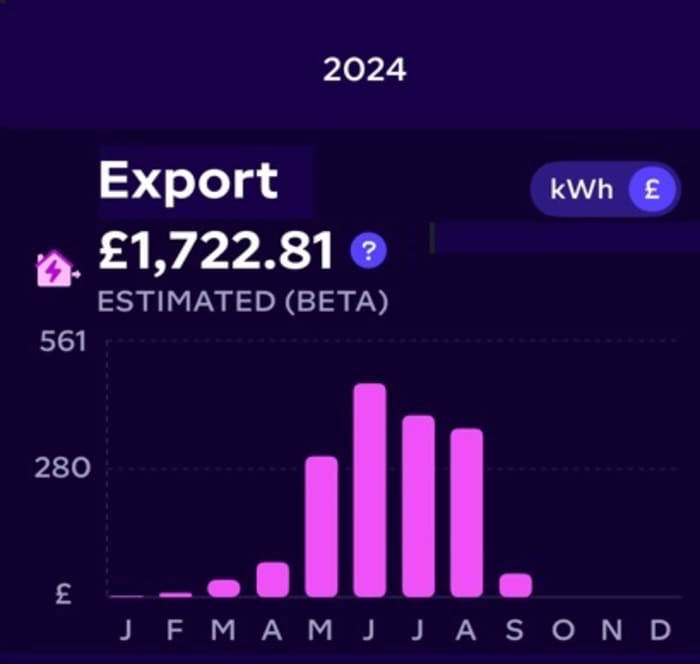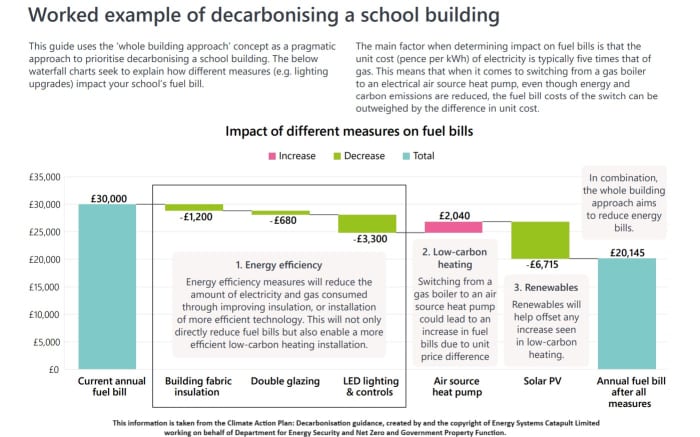Why electricity costs 4x more than gas and why that's a problem
⚡ Why Is Clean Electricity So Expensive — And What That Means for Net Zero
Right now in the UK, electricity costs nearly four times more than gas.
This creates a problem we don’t talk about enough:
🔌 A clean energy price penalty.
It means that if you try to do the right thing — heat your home with a heat pump, drive an electric car, or use electric heating — you often end up paying more.
And if you’re one of the millions of people in social housing or without access to mains gas, you’re locked into that high cost.
🏠 What this looks like in real life
Imagine two households:
- One uses a gas boiler.
- The other uses an electric heat pump, which the government is promoting to help reach net zero.
Despite being much more efficient, the heat pump user often ends up with higher energy bills — simply because electricity costs so much more per unit than gas.
This isn’t just frustrating — it’s unfair. And it’s holding us back.
📉 The bigger impact
This pricing imbalance affects everything:
- It slows down the adoption of heat pumps — especially for low-income households.
- It makes it harder to tackle fuel poverty.
- It discourages the switch to clean energy.
- And it raises questions about our energy security, because it keeps us tied to volatile global gas prices.
In fact, across Europe, the countries with the smallest electricity vs. gas price gap have the highest heat pump uptake. Norway and Sweden lead the way. The UK is near the bottom.
🔎 So why is electricity so expensive?
It’s not because it costs more to generate.
In fact, a lot of our new electricity increasingly comes from wind and solar, which are now cheaper than fossil fuels. But our system still:
- Adds most clean energy support costs to electricity bills, not gas
- Keeps taxes low on gas, even though it's the more polluting option
- Links electricity prices to gas prices — even when the electricity itself is from renewables
That’s why we’re in a situation where doing the clean thing costs more. It doesn’t make sense — for consumers, or for our climate.
🧭 Where REMA fits in
The government has now confirmed its decision not to go ahead with regional electricity pricing. That brings some welcome clarity for investors.
But we’re still missing clarity on the bigger issue:
🧩 How will electricity prices be decoupled from gas?
The REMA (Review of Electricity Market Arrangements) process aims to modernise the energy market, make it more flexible, and support investment in renewables and storage. That’s all important.
But REMA won’t reduce the clean energy price penalty on its own. It doesn’t yet fix the root problem — the way electricity is priced for consumers.
🔋 Why we need to fix this now
We’re going to be using a lot more electricity in the future:
- To heat our homes
- To power our cars
- To run cleaner industries
That means getting electricity pricing right is no longer optional. It’s essential.
We need to:
- ✅ Reduce the electricity price gap with gas
- ✅ Shift levies and costs fairly across fuels
- ✅ Provide a clear plan to investors, consumers, and businesses
Because without fair, affordable electricity, net zero will remain out of reach for millions — and clean technology will remain a luxury instead of a default.
✅ So what can we do right now?
While we push for fairer energy pricing, there’s something we can all act on immediately:
💡 Use less energy.
- Better insulation
- Smarter controls
- LED lighting
- More efficient equipment
These aren’t just “nice to haves” — they’re essential tools in hitting net zero, tackling fuel poverty, and cutting bills.
Energy efficiency is the quiet hero of the energy transition.
It costs less than new infrastructure, saves households money, and reduces emissions now — not in 10 years.
🔧 A fair energy system must also be an efficient one.
Let’s use less, waste less, and make every kWh count.
📣 Final thought
Climate action must be fair — or it won’t succeed.
Right now, we’re asking people to switch to clean energy, but charging them more for doing it.
We’ve taken a step forward with REMA. Now we need to finish the job — and make clean electricity affordable for everyone.



